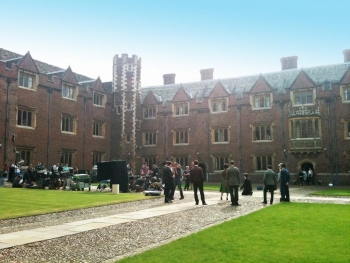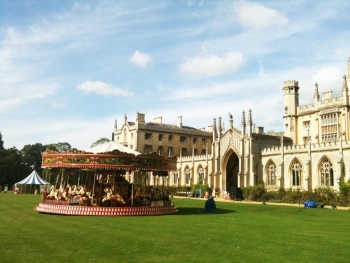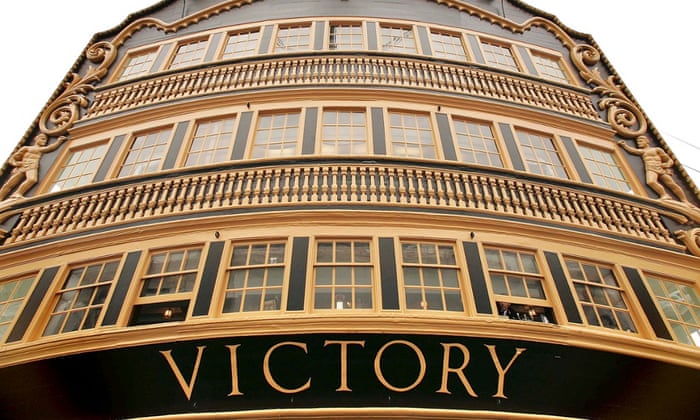Scientific tests suggest that a major aspect of the Neolithic agricultural revolution may have reached Britain 2000 years earlier than previously thought.
The research - carried out by scientists at the universities of Bradford, Birmingham and Warwick - reveal that wheat, probably already ground into flour, was being used at a Mesolithic Stone Age site in around 6000 BC.
The discovery - just published in the academic journal, Science - is likely to be viewed with some degree of consternation by many archaeologists because it completely changes accepted views of what happened in Britain (and indeed most of western Europe) in pre-Neolithic times.
The species of domesticated wheat - an early form, known as einkorn - was identified by scientists from the University of Warwick, using DNA analysis. Although no einkorn seeds as such were found, a small discrete area of intense einkorn DNA was detected when geneticists tested samples of sediment, recovered by archaeologists from an underwater Mesolithic site in the Solent, just off the coast of the Isle of Wight.
The area was dry land 6000 years ago - but within 30 or 40 years had been permanently inundated by the sea, as a result of melting Arctic and other glaciers following the end of the Ice Age.
 This underwater discovery could be set to rewrite Britain's prehistoric past (The Maritime Archaeology Trust/Roland Brookes)
This underwater discovery could be set to rewrite Britain's prehistoric past (The Maritime Archaeology Trust/Roland Brookes)The einkorn DNA - from a substantial quantity of the cereal, most likely in flour form - was recovered by archaeologists from the Maritime Archaeology Trust from a layer of sediment which had lain buried several metres below the seabed. Associated material (mainly fragments of wood) was dated by radio carbon 'Bayesian' dating techniques to between 6010 BC and 5960 BC.
The underwater location of the site is potentially very significant - because there are no other such indications of Neolithic influence in northwest Europe until around 5300 BC at the earliest. In Britain itself there are no aspects of Neolithic culture until around 4100 BC.
However thousands of square miles of Mesolithic land, on parts of Europe's and Britain's current continental shelves, were inundated by the sea between 6000 and 4000 BC - so the distinct possibility is emerging that cultural developments may have been occurring there, on those now- drowned coastal lowlands that did not take place further inland on what is still dry land.
For the archaeologists carrying out the research, a key puzzle is of course to work out how the einkorn got to the Isle of Wight. The nearest area known to have been producing einkorn by 6000 BC is southern Italy - and southern France and eastern Spain are thought to have been producing it by at least 5900 BC.
The big question therefore is whether the einkorn was brought by sea from one of those areas and then ground up for use on the Isle of Wight - or whether it had been grown on or near the Isle of Wight, after predecessor seeds had been brought there from southern France, Spain or Italy and then planted.
Whichever scenario is correct, the discovery suggests a very unexpected degree of Mesolithic period maritime mobility (and Neolithic-originating cultural practice) that has not hitherto been apparent from the archaeological record.
If now-inundated coastal zones around continental Europe and Britain really were home to more technologically-developed and geographically-connected Mesolithic societies than those more inland Mesolithic cultures on what is still dry land, then there should be other differences at the Isle of Wight site, apart from just the einkorn evidence.
 Garry Momber, Director of the Maritime Archaeology Trust says that it is "one of the richest collections of pre-Neolithic worked timbers ever found in Britain or elsewhere in Europe" (The Maritime Archaeology Trust/Roland Brookes)
Garry Momber, Director of the Maritime Archaeology Trust says that it is "one of the richest collections of pre-Neolithic worked timbers ever found in Britain or elsewhere in Europe" (The Maritime Archaeology Trust/Roland Brookes)Remarkably, some such evidence has indeed emerged there.
The archaeologists, working there have found evidence of a wider range of flint tool styles - including some Neolithic-style flint implements - and have also found around ten pieces of split timber, including three which had been split in a manner not seen elsewhere until the Neolithic.
The archaeologists say that the site may have been a Mesolithic boat-building encampment -perhaps the oldest such site yet discovered anywhere in the world. They have found evidence for woodworking, cooking and flint tool manufacturing. They also discovered pieces of Mesolithic string, the heel bone of a giant wild cow (aurochs) and DNA from dog (or wolf) and cattle (probably giant aurochs).
"The use of, or introduction of, cereal grains in Britain now appears to have been a much longer and more complex process than we had previously imagined," said archaeologist, Professor Vince Gaffney of the University of Bradford, co-author of the Science paper.
"Scientists' ability to analyse genetic material found deep in ancient buried marine sediments will open up a totally new chapter in the study of British and European prehistory.
"it is a unique method for exploring and understanding what was taking place in the huge swathes of prehistoric territory lost during sea level rise after the end of the last Ice age," said Professor Gaffney
Garry Momber, Director of the Maritime Archaeology Trust says that it is "one of the richest collections of pre-Neolithic worked timbers ever found in Britain or elsewhere in Europe"
"At present, we are only able to examine a tiny percentage of the constantly eroding underwater material - but hopefully, if we succeed in getting more funding, we will be able to recover and analyse much more of this unique site," he said.

















